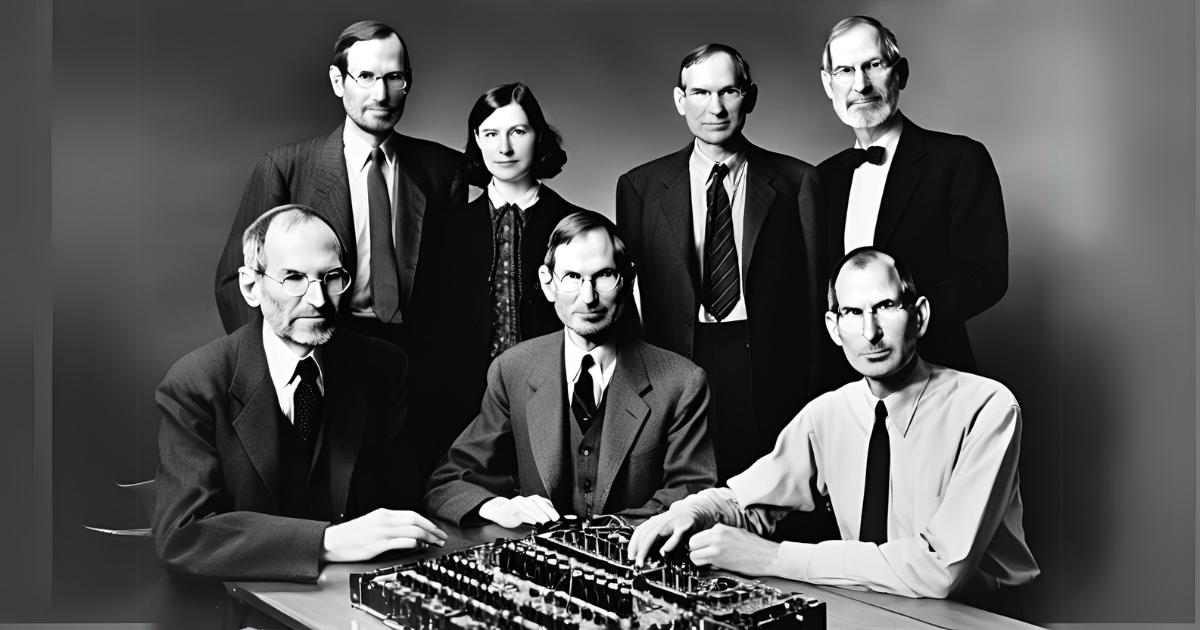In The Loop Episode 2 | The Future of AI Agents: What’s Real, What’s Hype & What’s Next
.png)
Published by
Published on
Read time
Category
Today, I want to dive into a word you've probably seen everywhere: AI agents.
As humans, we love to categorize everything, to understand when to use something or when to ignore it, to compare it against something we already understand. This is happening right now with AI agents.
In this episode of the In The Loop podcast, I'm going to discuss…
- What AI agents are;
- Explore the Operator and Deep Research agents by OpenAI—as well as other agents you’ve seen in the headlines;
- Examine what this means for the world, whether it's hype, and most importantly, what it means for you.
Join me for the next 17 minutes.
What are AI agents?
So, what's an AI agent? There's a lot of noise around the term "AI agent" right now.
Previously, anything that was machine learning became AI, and now, anything AI has become AI agents. As a consumer of technology, it's quite hard to understand the distinction between one thing and another, and as I mentioned, humans love to understand and categorize things.
There are many ways to describe AI agents. You could describe them as fully autonomous systems that operate independently over long periods—you give them a task, and they run off and do it using various tools, which I'll discuss later. Others use the term to describe very prescriptive implementations, like workflow-based agents and AI technology.
The challenge is that people are trying to label some things as AI agents and others as not, and we're getting muddled up because what we're really defining are agentic systems—and "agentic" is the keyword here.
Agentic systems distinguish themselves from Robotic Process Automation (RPA). Anyone familiar with rule-based workflow systems knows they become very complex quickly. Agentic systems can semi-autonomously operate, understand their objectives, determine whether they've achieved those objectives, and provide interpretation throughout a process. This can be incredibly expansive—as we’ll see with the Operator agent—or quite focused on a single step and its objective.
Understanding agentic systems: Practical examples
Let's make this more tangible. Imagine an AI agent designed to handle a Request For Proposal (RFP). The agent’s job is to extract data from separate spreadsheets, compile it for human review, gather additional information if needed, and complete a set of proposal questions.
A non-agentic system would need to follow every single step precisely. It would struggle with passing through data to extract information, requiring incredibly prescriptive instructions. If anything changed, the system would break down.
An agentic system can operate semi-autonomously. Each step might have a specific goal or objective for the agent to achieve. The agent can understand and determine whether it can achieve that goal, potentially skipping steps or working without human intervention if it already has the necessary information.
The key isn't in the user interface—it's in how the system reasons and understands whether it will achieve its objective. It's about making decisions based on available tools and resources.
Core components of AI agents
Tools and APIs
What often sets agents apart is their ability to use external tools and APIs. Large Language Models aren't perfect at everything—they're not great at math, for instance. However, an agent can call upon specific tools, like calculation software, when needed.
Take a survey tool as an example. Creating surveys on the fly is challenging for an agent, requiring complex reasoning and self-checking. That's why we build specific survey tools that agents can use under certain circumstances. Other tools might include CRM updates and various integrations.
Memory and context
Agents need some form of memory or context retention to understand previous conversations and store information consistently. This can be complex or simple, like using variables to remember specific important information when customers dictate how an agent should behave.
Reasoning and Planning
With new language models like DeepSeek, Claude, and ChatGPT, reasoning capabilities have become more sophisticated. Agents can now determine whether they need to create a process, review it, and check themselves—essentially behaving more like humans.
Orchestration and workflows
Agents can follow specific processes and steps while maintaining flexibility. Unlike rigid non-agentic processes, an agentic workflow can adapt based on objectives, skipping unnecessary steps if it already has the required information.
Deep Research agent
OpenAI recently released its Deep Research agent, which can conduct extensive research across the internet for 30-40 minutes and provide analysis. This opens possibilities for market research, Christmas shopping, academic papers, and more. Sam Altman claimed this single agent could automate 1% of all economic tasks—perhaps an overstatement, but still significant.
How research agents work
These agents typically have access to:
- Tools like web search;
- Multiple sub-agents with specific purposes (paper writer, report planner, researcher, section writer, refiner, etc.);
- Templates and objectives for quality control;
- The ability to determine when human intervention is needed
Research agent in action
Andrew Maynard, an academic and writer, tested the deep research agent by attempting to create a dissertation-level thesis. His initial attempt to create it in one go produced 20 pages – impressive but insufficient. By breaking the task into smaller components over four days, he achieved a 400-page draft covering history, science, global risks, and ethics.
Limitations and reality check
The agent showed several weaknesses:
- Problems with citations and references;
- Lack of originality;
- Quality issues in longer pieces;
- Difficulties with formatting and flow.
GUI Agents
A GUI (Graphical User Interface) agent mimics human interactions with a computer. It takes screenshots, interprets them, and navigates through applications just like a human would. When it encounters something like a CAPTCHA, it requests human assistance, showing you exactly what's happening in real time.
These agents can handle tasks like shopping, travel planning, and even application building. While their capabilities overlap with other workflow agents, each type has its unique advantages. In the future, we'll likely see a combination of these approaches becoming everyday tools.
The future of AI agents
This follows the Jevons paradox: when something becomes dramatically more efficient, its usage increases. Just as easier coding leads to more code and simpler writing tools create more content, AI agents are creating a huge leap in potential innovation. However, we're still missing some crucial elements.
Infrastructure and development tools
Y Combinator's request for startups highlighted the need for:
- Agent development tools as an infrastructure layer;
- No-code platforms for creating and deploying agents;
- Platforms like Mindset AI that facilitate this development.
Business-to-Agent software
A fascinating emerging concept is that AI agents will become such active participants in online activities that we'll need specific technology to service them. This includes:
- Agent-friendly digital marketplaces;
- Easy authentication systems for agents;
- Website add-ons that help agents quickly understand offerings.
Personal AI staff
The rise of personal AI staff is becoming more feasible. Imagine agents handling consumer finance, bill payments, and budget management using tools, memory, and collaborative agent systems.
The future of work
According to Andrew NG, we're seeing a shift in valuable skills. Product managers, strategists, and entrepreneurs who can decide what to build will thrive. Software engineers will still be needed, but their role will evolve: they'll manage agent teams creating prototypes, debugging, and ensuring technical feasibility.
The concept of a "10X engineer"—someone who can have 10 times the impact of a normal engineer—is expanding beyond engineering. We'll see:
- 10X recruiters;
- 10X marketers;
- 10X team members—all leveraging AI agents to amplify their impact.
The key skill for the future will be AI management—the ability to effectively manage and coordinate multiple AI agents at scale. This points toward an era of abundance made possible by AI technology.
The future of AI agents is so exciting—if you would like to read more about emerging trends, take a look at these eight agentic AI predictions for Product Leaders.


.png)


.png)
.png)
.png)

.png)
.png)
.png)
.png)

.png)
.png)



.png)






.jpeg)
